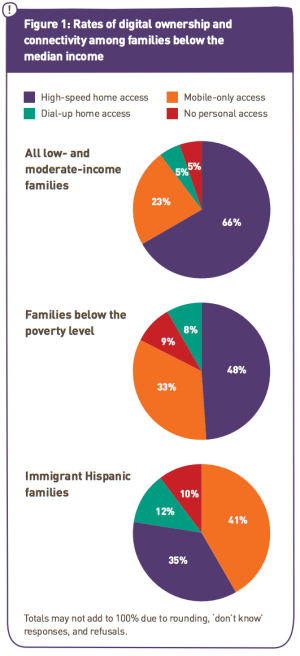Ownership of mobile devices has grown swiftly since the introduction of the smartphone and has created more opportunities to connect to the Internet. Mobile devices have meant more Internet connectivity, but a closer look at how lower-income families use that access reveals the digital divide is still a problem.
A report by the Joan Ganz Cooney Center at Sesame Workshop and Rutgers University found that until all families have reliable Internet access at home, learning environments will not be equitable.
Kids who don’t have reliable Internet access at home (which includes the use of a laptop of desktop for connecting to the Internet) are “less likely to go online to look up information about things that they are interested in,” according to the report. While mobile devices do provide Internet access, kids don't seem to use them for the deeper type of informal learning championed by tech advocates: 35 percent of children with mobile-only access look up information often, as compared with 52 percent of kids with Internet at home.
“These kids are less likely to be online in general and doing informal learning when they have mobile-only access,” said Victoria Rideout, a co-author of the report, "Opportunity for All? Technology and Learning in Lower-income Families," which was funded by the Bill & Melinda Gates Foundation. A strong Internet connection at home allows kids to work on homework assignments, look up information and communicate with teachers and classmates more readily.



